7-Imp’s 7 Picture Book Tips for Impossibly Busy Parents #4 (the Almost Julie-Paschkis-Edition)
 Monday, March 10th, 2008
Monday, March 10th, 2008
I’m going to do this week’s list the lazy-blogger’s way by pretty much just rounding up others’ reviews of these titles (others’ thought will be in this fetching shade of blue — woot! Fun with HTML colors!), since my oldest turns four this week, and we have some serious partying down for which to get ready, people.
If you’re new to this feature, it’s where I’ll talk about some books that were, for the most part, released last year, the idea being that your local library should have them (no reviews of advance copies, not out for two more months or so, are allowed here). In fact, every book on my list this week was one I retrieved from one library or another, so I’m really hoping yours will have them, too.
Let’s get right to it. Again, I’m going to include review excerpts from others, but only if I agree with them, of course of course of course. Heh. And these titles will cover a wide age range. I’m not going to narrow this week. They’re all over the place, the only common denominator being that they’re all what I think are good — or great — books. And, since there are so many more and these are but seven, do tell me what you’ve been reading this week with your own wee ones.
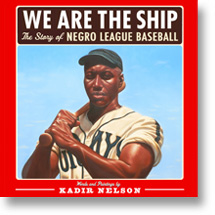
by Kadir Nelson
Jump at the Sun/Hyperion
January 2008
Okay, wait, so this was released this year, and you might have to wait a bit at your local library to get this one into your hands, but it’s worth the wait. OH MY, have you SEEN this book, the one that received Caldecott buzz — as in, 2009 buzz — during the first month of the year? This is the first book Nelson has both written and illustrated, and it’s a jaw-dropping wonder of a thing. Nelson, using an “Everyman” player as the narrator, tells the story of Negro League baseball from its beginnings in the 1920s through the decline after Jackie Robinson crossed over to the majors in 1947. Publishers Weekly calls it “a sumptuous volume that no baseball fan should be without” and adds, “while this large, square book (just a shade smaller than a regulation-size base) succeeds as coffee-table art, it soars as a tribute to the individuals . . .” Don’t miss Betsy Bird’s detailed review of it over at A Fuse #8 Production, including her memorable opening (“Nope. Sorry. Not fair. Kadir Nelson, I hate to be the one to tell you this, but you’ve completely overdrawn your account in the creativity department. I could accept that you are one of the greatest living illustrators making his way today. I didn’t even mind how young and talented you were. That was fine. But dude, did I actually have to learn that you were a remarkable writer as well?”) and closing (“It’s a one-of-a-kind book, the like of which you have not seen, nor ever will see again. A triumph.”) Kelly Fineman also covered this title over at the wonderful, new blog dedicated to nonfiction and authored by a whole slew of fabulous nonfiction authors and illustrators, I.N.K. (Interesting Nonfiction for Kids):
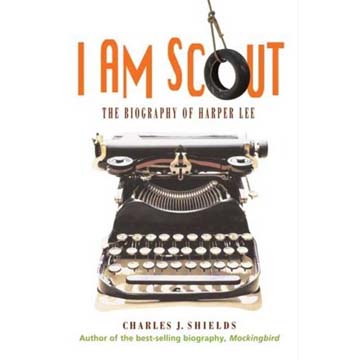 I used to read To Kill a Mockingbird annually. Though I gave up that habit, without meaning to, I was always impressed by the fact that I found something new to love about the novel each year I read it. And, of course, I’m not alone. Harper Lee is the favorite one-hit wonder of a lot of readers.
I used to read To Kill a Mockingbird annually. Though I gave up that habit, without meaning to, I was always impressed by the fact that I found something new to love about the novel each year I read it. And, of course, I’m not alone. Harper Lee is the favorite one-hit wonder of a lot of readers.  Last summer, Knopf Books released
Last summer, Knopf Books released  Valentine’s Day may have passed, but since you’re probably still reeling from (or still eating) some of the delicious treats that are part and parcel of the holiday, I thought I’d tell you on this Nonfiction Monday about
Valentine’s Day may have passed, but since you’re probably still reeling from (or still eating) some of the delicious treats that are part and parcel of the holiday, I thought I’d tell you on this Nonfiction Monday about 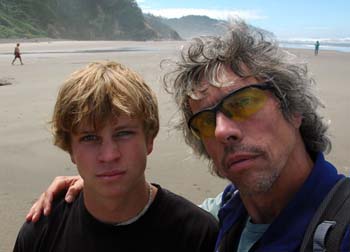 In 2007, School Library Journal described author/illustrator Steve Jenkins as a “master illustrator,” and you’d be hard-pressed to find someone who didn’t agree with that. Steve — pictured here with his son on a summer road trip (“my mother said I look like a street person,” Steve told us. “My daughter granted, more kindly, that I could pass as a bohemian poet”) — has illustrated thirty nonfiction books for children, eighteen of them written by himself or co-authored with his wife, Robin Page. And the science teachers and librarians of the world are happy about this, because Steve’s books are titles that impart facts but do so in an enticing and entertaining way and with his signature eye-popping torn-and-cut paper collages.
In 2007, School Library Journal described author/illustrator Steve Jenkins as a “master illustrator,” and you’d be hard-pressed to find someone who didn’t agree with that. Steve — pictured here with his son on a summer road trip (“my mother said I look like a street person,” Steve told us. “My daughter granted, more kindly, that I could pass as a bohemian poet”) — has illustrated thirty nonfiction books for children, eighteen of them written by himself or co-authored with his wife, Robin Page. And the science teachers and librarians of the world are happy about this, because Steve’s books are titles that impart facts but do so in an enticing and entertaining way and with his signature eye-popping torn-and-cut paper collages.  First, you’d be wise to treat yourself to this first biography,
First, you’d be wise to treat yourself to this first biography, 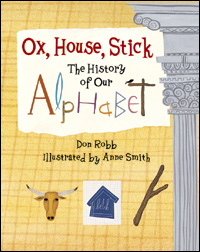 And here’s a fabulous nonfiction title I’ve been wanting to blog about for a while. It’s called
And here’s a fabulous nonfiction title I’ve been wanting to blog about for a while. It’s called 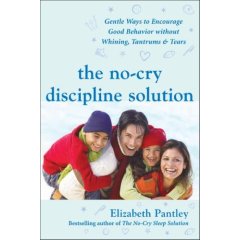
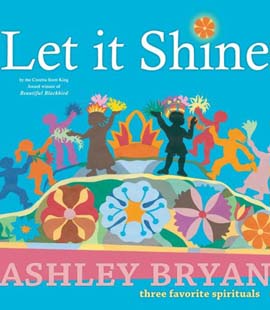
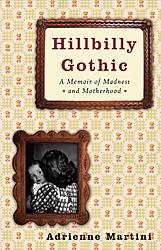 It’s the first Monday of the month, and that means we get to highlight what we think is a
It’s the first Monday of the month, and that means we get to highlight what we think is a 